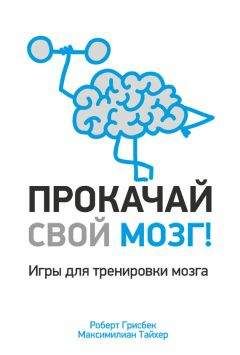D., Dehaene, S., & Dupoux, E. (2003). Phonological grammar shapes the auditory cortex: A functional magnetic resonance imaging study. Journal of Neuroscience 23(29):9541–9546.
Jared, D., & Seidenberg, M. S. (1991). Does word identification proceed from spelling to sound to meaning? Journal of Experimental Psychology: General 120:358–394.
Jobard, G., Crivello, F., & Tzourio-Mazoyer, N. (2003). Evaluation of the dual route theory of reading: A metanalysis of 35 neuroimaging studies. Neuroimage 20(2):693–712.
Kanwisher, N., McDermott, J., & Chun, M. M. (1997). The fusiform face area: A module in human extrastriate cortex specialized for face perception. Journal of Neuroscience 17:4302–4311.
Karmiloff-Smith, A. (1992). Beyond modularity. Cambridge, MA MIT Press.
Kawai, N., & Matsuzawa, T. (2000). Numerical memory span in a chimpanzee. Nature 403(6765):39–40.
Kellman, P. J., & Spelke, E. S. (1983). Perception of partly occluded objects in infancy. Cognitive Psychology 15:483–524.
Kilgard, M. P., & Merzenich, M. M. (1998). Cortical map reorganization enabled by nucleus basalis activity. Science 279(5357):17 4–1718.
Kitterle, F. L., & Selig, L. M. (1991). Visual field effects in the discrimination of sine-wave gratings. Perception and Psychophysics 50(1):15–18.
Klingberg, T., Hedehus, M., Temple, E., Salz, T., Gabrieli, J. D., Moseley, M. E., & Poldrack, R. A. (2000). Microstructure of temporo-parietal white matter as a basis for reading ability: evidence from diffusion tensor magnetic resonance imaging. Neuron 25(2) 493–500.
Klüver, H., & Bucy, P. C. (1937). Psychic blindness and other symptoms following bilateral temporal lobectomy in rhesus monkey. American Journal of Physiology 119:352–353.
Kolinsky, R., Morais, J., Content, A., & Cary, L. (1987). Finding parts within figures: A developmental study. Perception 16(3):399–407.
Kolinsky, R., Morais, J., & Verhaeghe, A. (1994). Visual separability: A study on unschooled adults. Perception 23(4):471–486.
Kotz, S. A., Cappa, S. F., von Cramon, D. Y., & Friederici, A. D. (2002). Modulation of the lexical-semantic network by auditory semantic priming: an event-related functional MRI study. Neuroimage 17(4):1761–1772.
Koyama, S., Kakigi, R., Hoshiyama, M., & Kitamura, Y. (1998). Reading of Japanese Kanji (morphograms) and Kana (syllabograms): A magnetoencephalographic study. Neuropsychologia 36(1):83–98.
Kraebel, K. S., West, R. N., & Gerhardstein, P. (2007). The influence of training views on infants’ long-term memory for simple 3D shapes. Developmental Psychobiology 49(4):406–420.
Kuhl, P. K. (2004). Early language acquisition: Cracking the speech code. Nature Reviews Neuroscience 5(11):831–843.
Kujala, T., Karma, K., Ceponiene, R., Belitz, S., Turkkila, P., Tervaniemi, M., & Naatanen, R. (2001). Plastic neural changes and reading improvement caused by audiovisual training in reading-impaired children. Proceedings of the National Academy of Sciences 98(18):10509–10514.
Kuo, W. J., Yeh, T. C., Duann, J. R., Wu, Y. T., Ho, L. T., Hung, D., Tzeng, O. J., & Hsieh, J. C. (2001). A left-lateralized network for reading Chinese words: A 3 T fMRI study. NeuroReport 12(18):3997–4001.
Kuo, W. J., Yeh, T. C., Lee, C. Y., Wu, Y. T., Chou, C. C., Ho, L. T., Hung, D. L., Tzeng, O. J., & Hsieh, J. C. (2003). Frequency effects of Chinese character processing in the brain: An event-related fMRI study. Neuroimage 18(3):720–730.
Lachmann, T., & Geyer, T. (2003). Letter reversals in dyslexia: Is the case really closed? A critical review and conclusions. Psychology Science 45:50–70.
Lambon-Ralph, M. A., Jarvis, C., & Ellis, A. W. (1997). Life in a mirrored world: Report of a case showing mirror reversal in reading and writing and for non-verbal materials. Neurocase 3:249–258.
Larson, K. (2004). The science of word recognition, http://www.microsoft.com/typography/ctfonts/WordRecognition.aspx.
Laufs, H., Krakow, K., Sterzer, P., Eger, E., Beyerle, A., Salek-Haddadi, A. & Kleinschmidt, A. (2003). Electroencephalographic signatures of attentional and cognitive default modes in spontaneous brain activity fluctuations at rest. Proceedings of the National Academy of Sciences 100(19):11053–11058.
Laureys, S. (2005). The neural correlate of (un)awareness: Lessons from the vegetative state. Trends in Cognitive Sciences 9:556–559.
Lavidor, M., Babkoff, H., & Faust, M. (2001). Analysis of standard and non-standard visual word format in the two hemispheres. Neuropsychologia 39(4):430–439.
Lavidor, M., & Ellis, A. W. (2002). Word length and orthographic neighborhood size effects in the left and right cerebral hemispheres. Brain and Language 80:45–62.
Le Bihan, D., Urayama, S., Aso, T., Hanakawa, T., & Fukuyama, H. (2006). Direct and fast detection of neuronal activation in the human brain with diffusion MRI. Proceedings of the National Academy of Sciences 103(21):8263–8268.
Lee, C. Y., Tsai, J. L., Kuo, W. J., Yeh, T. C., Wu, Y. T., Ho, L. T., Hung, D. L., Tzeng, O. J., & Hsieh, J. C. (2004). Neuronal correlates of consistency and frequency effects on Chinese character naming: An event-related fMRI study. Neuroimage 23(4):1235–1245.
Lee, K. M. (2004). Functional MRI comparison between reading ideographic and phonographic scripts of one language. Brain and Language 91(2):245–251.
Leff, A. P., Crewes, H., Plant, G. T., Scott, S. K., Kennard, C., & Wise, R. J. (2001). The functional anatomy of single-word reading in patients with hemianopic and pure alexia. Brain 124(Pt 3):510–521.
Leppanen, P. H., Richardson, U., Pihko, E., Eklund, K. M., Guttorm, T. K., Aro, M., & Lyytinen, H. (2002). Brain responses to changes in speech sound durations differ between infants with and without familial risk for dyslexia. Developmental Neuropsychology 22(1):407–422.
Lerner, Y., Hendler, T., Ben-Bashat, D., Harel, M., & Malach, R. (2001). A hierarchical axis of object processing stages in the human visual cortex. Cerebral Cortex 11(4):287–297.
Leroi-Gourhan, A. (1983). Le fil du temps. Paris: Fayard.
–—. (1993). Gesture and speech. Cambridge, MA: MIT Press.
Levy, I., Hasson, U., Avidan, G., Hendler, T., & Malach, R. (2001). Center-periphery organization of human object areas. Nature Neuroscience 4(5):533–539.
Liberman, I. Y., Shankweiler, D., Orlando, C., Harris, K. S., & Berti, F. B. (1971). Letter confusions and reversals of sequence in the beginning reader: Implications for Orton’s theory of developmental dyslexia.





